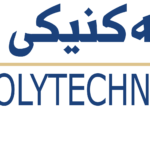- Diana Hayder Hussein
- diana.hussein@epu.edu.iq
- +9647504062524
- Dissertation-diana
-
The emerging Fifth-Generation (5G) technology towards Internet of Vehicles (IoV) provides numerous advantages, such as lower levels of latency, stable link connections, and support for high mobility. However, avoiding vehicle collisions in IoV is a challenging task due to disseminating Emergency Safety Messages (ESMs) without strict delay and reliability requirements. To address this issue, this study proposes a novel intelligent Software-Defined Networking-based Collision Avoidance (SDNCA) framework assisted 5G. The proposed SDNCA framework employs two system models, each comprising three proposed algorithms. In the first system model, primarily, SDNCA performs the Vehicular Federated Learning (VFL) algorithm that accurately estimates the risk severity for each vehicle via training the proposed Risk Severity-Artificial Neural Network (RS-ANN) model through the implementation of federated learning among vehicles. The SDNCA framework applies the SDN algorithm to achieve three main objectives. First, it calculates the Quality of Service (QoS) of the ESM. Second, it dynamically allocates both 5G network and computing resources for three Virtual Networks (VNs). Third, it selects the optimal 5G base station (gNB) for routing the ESM to the destination vehicle. To ensure effective forwarding for each ESM, SDNCA deploys the gNB algorithm at the selected gNB to schedule the ESMs considering their priorities and configures the 5G network resources and computing resources based on the OpenFlow control message received from the SDN.
The implementation of the second system model integrates the VFL, SDN, and gNB algorithms, focusing on the risk distance between the source and destination vehicles. The objective of the second system model is to ensure the successful transmission of ESMs in scenarios when considering the risk distances between vehicles.
The two system models have been implemented using three simulation tools: Network Simulator (NS3), Python programming language, and a Mininet network emulator. The real-time simulation results demonstrate the evaluation of the SDNCA framework into two sections, compared with the existing related research. The first section assesses the performance of the SDNCA framework by varying the density and speed of the vehicles. These results include 17% and 20% Network Overhead (NO), 17% and 20% Computational Complexity (CC), 0% Collision Rate (CR), 18 ms End-to-End (E2E) Delay, 89%–90% Packet (ESM) Transmission Reliability (TR), 99.5% and 99.4% Successful Routing Ratio (SRR), 0.0050 ms Routing Efficiency (RE), 0% Packet Drop Ratio (PDR), 0.25 and 0.5 Channel Utilization (CU), and 4.5 ms and 4 ms E2E Delay with different values of the allocated bandwidth. The second section evaluates the performance of the SDNCA framework at distances ranging up to 30 meters between the source and destination vehicles, taking into account different vehicle densities and speeds. These results include 97%–99.5% and 98.4%–99.8% SRR, 4 ms and 3.5 ms RE, 0% CR, and 4.5 ms E2E Delay.
- Erbil Technical Engineering College
- Information Systems Engineering
- Communications and Networking


